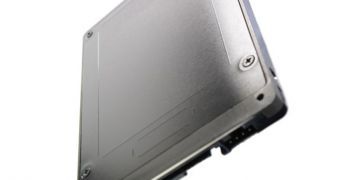Seagate may have fallen behind Western Digital on the storage market, especially now that the latter owns Hitachi as well, but the outfit definitely isn't finished yet, and its newest press release proves it.
It seems that Seagate decided it was time for one of those major product refreshes, so it released a bunch of new HDDs and SSDs.
On the solid state drive front, the Pulsar.2 and PulsarXT.2 are the new arrivals and, instead of consumers, are aimed at enterprise applications.
The main difference between them is that the former uses MLC (multi-level cell) NAND Flash memory chips, while the latter boasts SLC (single-level cell).
“The surge in storage consumption is being driven not only by the growth of content and use within the enterprise, but also by new applications and devices that directly or indirectly consume enterprise storage,” said Kurt Richarz, Seagate EVP of Product Line Management.
“Seagate’s new family of enterprise storage solutions meets the diverse storage needs of these high growth application environments, whether it’s fast transactional database servers, bulk storage and archiving, or everything in between.”
Error correction is the specialty of the Pulsar.2 series (up to 800 GB capacities), while performance is ensured by support for 6 Gbps SAS and SATA interfaces.
Meanwhile, the Pulsar XT.2 is composed of 2.5-inch drives of up to 400 GB and which communicate via the native 6 Gbps SAS interface.
All in all, the XT.2 should qualify as the fastest drives Seagate has to offer, with read and write speeds of 360 MB/s and 300 MB/s, respectively. Availability is set for Q2, 2011, but prices were not given.
“HP continues to see new opportunities for solid state storage technology as customers increase virtual system workloads, needing higher performance while reducing power requirements,” said Jim Ganthier, HP Industry Standard Software and Systems vice president of Marketing.
“HP continues to look forward to storage technology advances from Seagate including wider SSD enablement across HP systems and workloads.”

 14 DAY TRIAL //
14 DAY TRIAL //